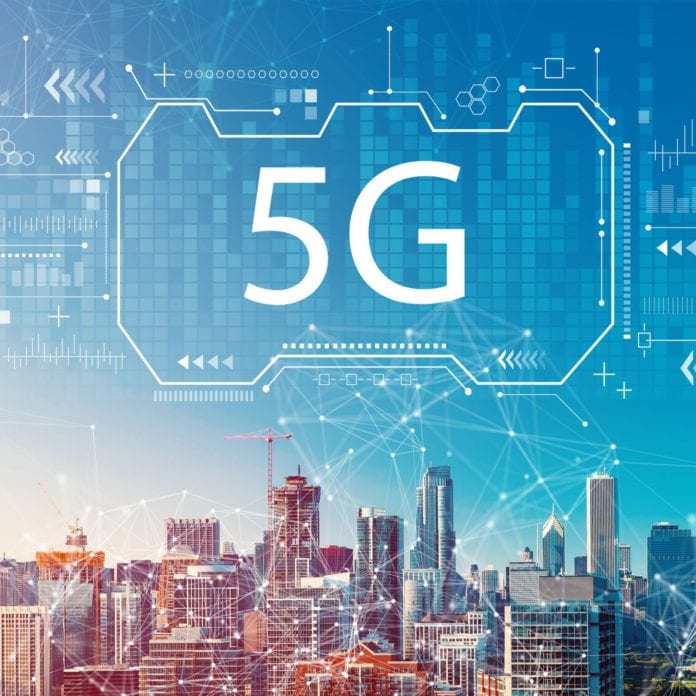The consumer smartphone market was the first market to be disrupted by 5G. Today, wireless providers, smartphone vendors, and app developers are already providing a wide variety of 5G-based products and services, and beginning to make the easily available, super-fast personal connectivity promised in their advertisements a reality for consumers.
However, 5G’s faster data speeds, lower latency, ability to be “sliced” into private cellular networks, and other advancements are now beginning to be felt beyond the consumer market. Three commercial markets in particular — live media streaming, large facility networks, and first responder communications — are in the process or on the cusp of being transformed by 5G.
Live Media Streaming
Perhaps the market that has moved fastest to take advantage of 5G is the live media streaming market. For years, satellite communications (satcom) technology dominated this market, offering broadcasters the reliable, broadband bandwidth they needed to send live video from football games, concerts, protests and other events to their broadcasting centers for distribution to their audiences.
Yet, satcom came with several drawbacks. With satcom broadcasters need to send outside broadcast (OB) vehicles with production personnel to the event they are broadcasting. This is because they have to produce the video on-site since satcom does not provide low enough latency for them to do this production work remotely. Broadcasters also have to pay expensive satcom data transmission fees.
Before the introduction of 5G these issues with satcom were already leading many broadcasters to begin using mobile video encoders with LTE modems to wirelessly stream video from sporting, news and other events to their production facilities. However, 5G has made the use of mobile video encoders a much more competitive alternative satcom.
5G’s higher data speeds allow mobile video encoders to more reliably stream high-definition video from live events to production facilities. In addition 5G’s low latency makes it much easier for broadcasters to handle live video production from a central facility, as the mobile encoders can quickly respond to any signals production personnel send to them. Finally, cellular data transmission costs are much lower than satcom data transmission costs.
These benefits, along with the simplicity that consolidating all production at a central provides, are why broadcasters around the world are now using 5G to live stream video from the Tokyo Olympics, Greek football matches, Spanish basketball tournaments and other live events.
Large Facility Networks
Wi-Fi has become a technology standard for the private networks used at factories, warehouses, office buildings, college campuses and other large facilities, even though it offers weaker security, poorer coverage and higher maintenance costs than cellular networks. One of the main reasons for this is until recently was that it was difficult, if not impossible, for a private enterprise to gain access to the wireless spectrum they needed to deploy their own private cellular network.
However, 5G is making it easier for facility owners to deploy their own cellular networks, and thus benefit from cellular’s better security, broader coverage, and lower cost. Governments in Europe, the United States, and elsewhere are reserving spectrum for private LTE and 5G networks, allowing facilities to purchase this spectrum for their own private cellular networks. Once they own this spectrum, all they need are base stations, cellular routers and other network infrastructure to set up their very own private cellular network. And, thanks to 5G speed, latency and other improvements, private 5G networks can provide just as good, if not better performance as the most advanced Wi-Fi networks.
In addition, because 5G enables Mobile Network Operators (MNOs) to “slice” part of their spectrum into a private 5G network, facility owners can choose to partner with an MNO or other third party to set up a private 5G network for them. In this case the network infrastructure might be owned by facility owner, reserved exclusively for their use, or shared with public cellular network customers.
Today, private 5G networks have been set up at a Mercedes Benz factory in Germany, a Bosch factory in the United Kingdom, and at a mine operated by Boliden in Sweden. The owners of these facilities can use these secure, fast, low latency and reliable private 5G networks to connect their automated guided vehicles (AGV), robotic product picking, rugged handhelds and other assets to the — accelerating their organizations’ digital transformations.
Public Safety Communications
Public safety agencies are starting to look at how they can use 5G to collect, view, and analyze video from emergencies in real-time. For example, even existing LTE networks support the deployment of Ambulance Video Assistant solutions able to transmit real-time video from ambulances and body cameras to doctors in transit to the emergency or at the hospital. With this real-time video, these doctors can perform remote triage, improving patient outcomes. By increasing video quality and reliability, 5G will further improve the quality and performance of these Ambulance Video Assistant solutions.
In addition, thanks to 5G’s high speed and low latency, police departments can now stream live, high-definition video from police cars and body cameras to other officers in the field and command staff at headquarters, improving their situational awareness. Firefighters can use 5G-equipped drones to gather high-resolution video from building and forest fires, providing them with insights on how to more quickly extinguish these fires or halt them from spreading further.
Moving 5G beyond the Smartphone
While consumer smartphones are the first market where 5G has made its presence felt, it is quickly expanding to other markets. 5G’s performance and other advantages enable broadcasters to use it to live stream video from sporting and other events, first responders to use it to view live-video from emergencies and facility owners to set up their own private 5G networks. As organizations in other markets find their own ways to use 5G to digitally transform the way they operate, expect the 5G revolution to gather steam, changing the way we work, play and live in ways we have yet to even imagine.

